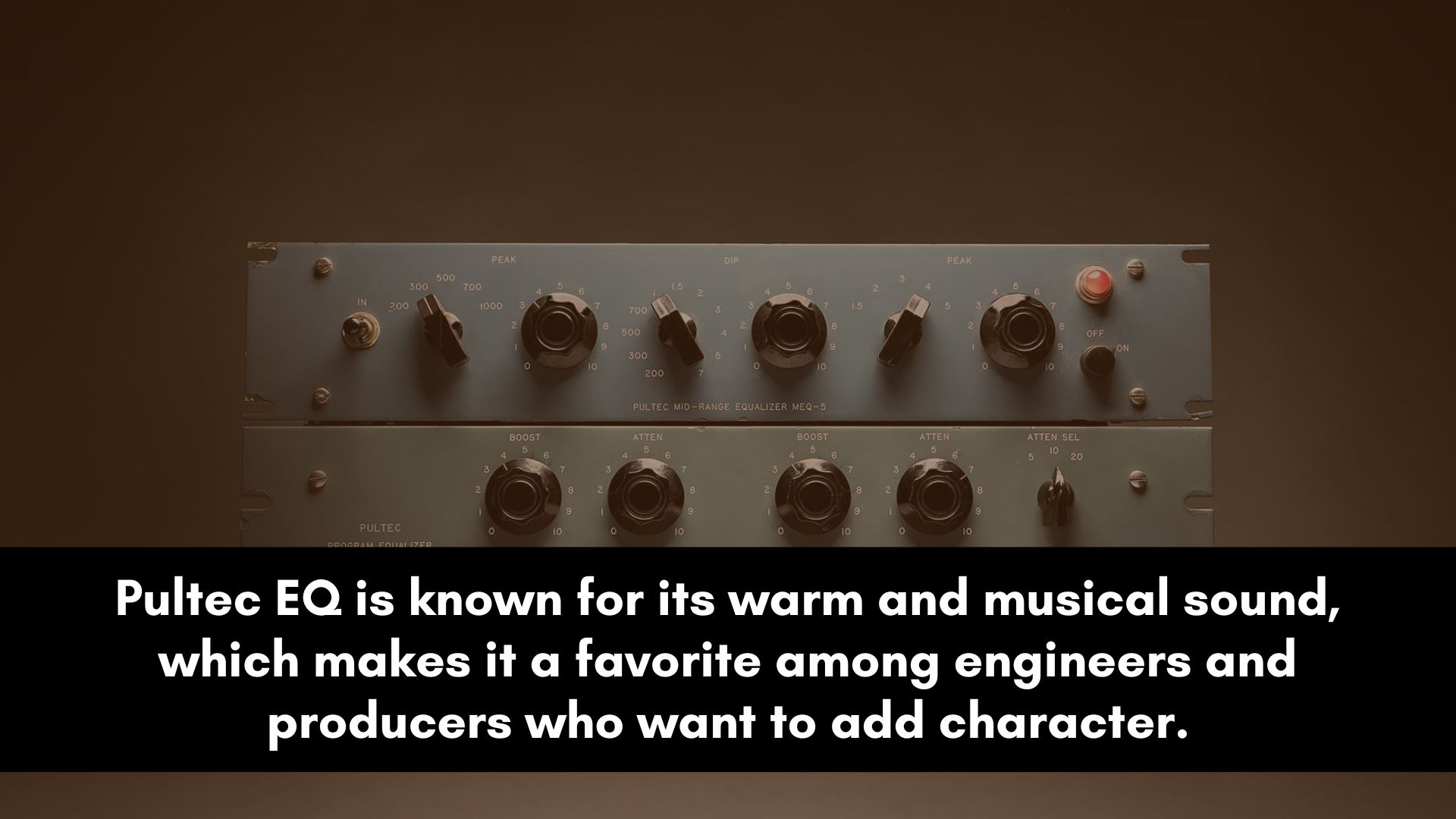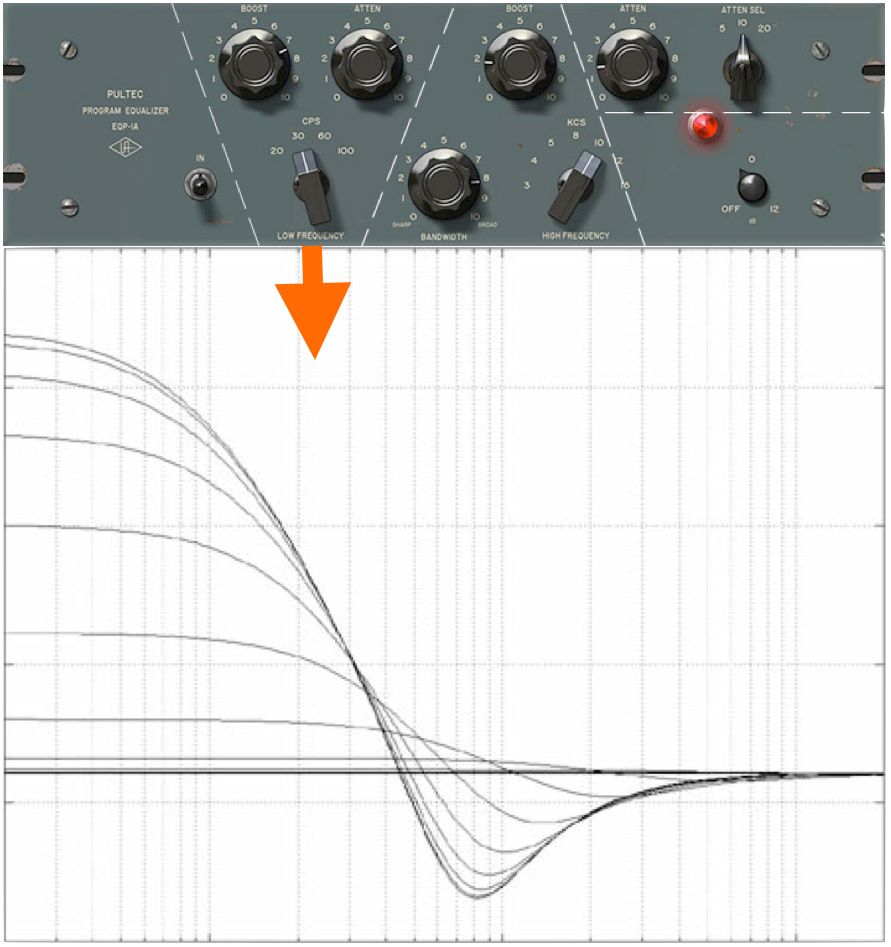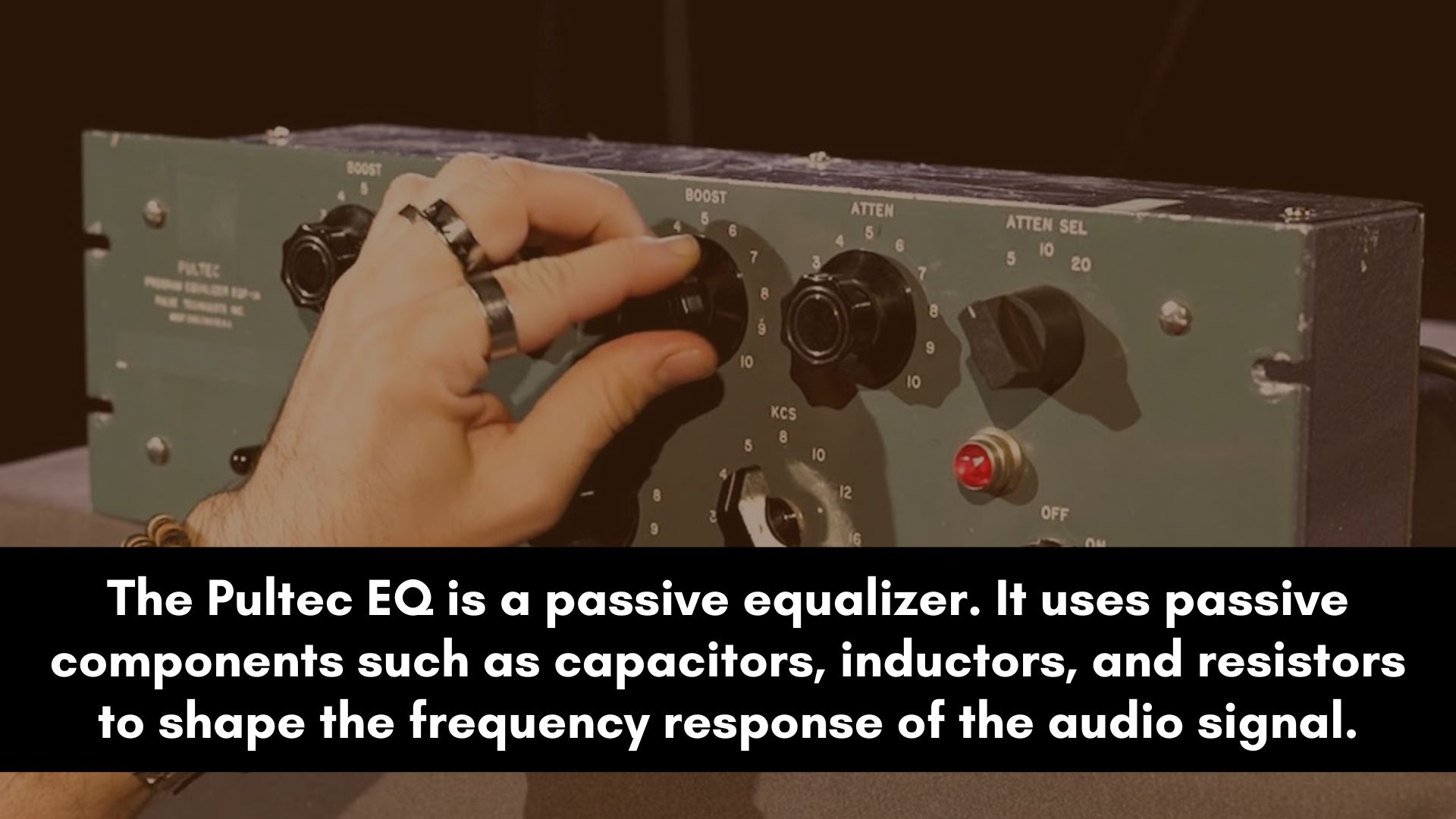
The Pultec EQ is legendary in the world of audio production.
Its enduring reputation is built on its unique sound, versatility, and the musical quality it adds to recordings.
When I think of classic tools that have stood the test of time, the Pultec EQ sits right at the top of the list.
Whether you're enhancing vocals, tightening up a mix, or giving a final polish to a master, the Pultec EQ is a go-to for many seasoned engineers and producers.
What Is the Pultec EQ?
The Pultec EQ is an analog equalizer that first appeared in the 1950s, developed by Pulse Techniques, Inc.
It became a staple in professional studios due to its warm, musical tone.
Unlike many modern EQs, which often sound precise but sterile, the Pultec adds a special character to audio.
It’s known for its passive circuitry combined with a tube amplifier stage, which adds harmonic richness to the signal.
One of the standout features of the Pultec is that it’s not just an equalizer but a combination of a passive EQ and a tube-driven makeup gain stage.
The passive components—inductors and capacitors—shape the frequency response, while the tube section injects subtle, even-order harmonics that create a warm, pleasing sound.
This combination is what gives the Pultec its signature “musical” quality.
The Unique Features
When discussing the Pultec EQ, I always highlight its low-end boost and cut capability as one of its most distinctive features.
This dual function allows you to simultaneously boost and attenuate the same low frequency, often referred to as the “Pultec EQ trick.”
It may seem counterintuitive, but the result is a tight, well-defined low end with minimal muddiness.
I’ve used this trick countless times to add depth to kick drums or bass guitars without overpowering the mix.
The midrange section, covering 200 Hz to 5 kHz, is invaluable for adding presence or removing harshness from a variety of instruments.
I find it particularly effective for making vocals cut through a dense mix or for shaping guitars to sit more comfortably without clashing with other elements.
For the high-end, the Pultec EQ’s boost circuit can add a subtle sheen to a mix.
This high-frequency boost doesn’t come off as harsh or brittle, which is often a risk with digital EQs.
The LC filter design of the high-end section ensures that boosts remain smooth, enhancing the clarity and sparkle of instruments.
The Pultec’s Role in Modern Mixing and Mastering
Even with today’s digital processing tools, the Pultec EQ remains a favorite.
Its unique ability to add warmth and character is unmatched by many digital emulations, even though some plugins come close.
While I’ve tried many digital versions, there’s something about the original hardware that can’t be fully replicated—a certain depth and nuance that brings life to a recording.
In mastering, the Pultec EQ’s subtle harmonic distortion is often used to give a mix that final touch of cohesion.
It can add a sense of “glue” without compromising the transients or dynamic range.
This subtle analog saturation can be the difference between a mix that sounds good and one that sounds polished and professional.
Common Uses and Benefits
So, why do engineers continue to swear by this EQ after more than 70 years?
Some of the best uses include:
- Enhancing the low end: It is popular for its unique low-end boost section, which can be used to enhance the bass frequencies on a sound, groups of sounds, or the entire mix. This can be particularly useful for adding weight to instruments such as kick drums, bass guitars, and synths.
- Adding warmth and character: Passive equalization and tube amplification are useful for adding a vintage or analog feel or for bringing out the natural tonal qualities of acoustic instruments.
- Taming harsh frequencies: Use passive equalization for taming harsh or resonant frequencies. It creates a more natural and musical-sounding reduction in the offending frequency, as opposed to the potentially more surgical and precise reduction that an active EQ might provide.
- Creating depth and dimension: The Pultec EQ can be used to create depth and dimension in a mix by subtly boosting or cutting certain frequency ranges. This can help create a more immersive and engaging listening experience for the listener.
- High-frequency sparkle: Enhances cymbals, strings, and airy vocal textures without sounding aggressive.
- Mastering: As mentioned earlier, the Pultec EQ is a popular tool for mastering. Its unique combination of passive equalization and tube amplification can help add warmth and character to a mix, and its low-end boost section can be particularly useful for enhancing the overall tonality of the mix.
The Pultec Curve Explained

One of the most interesting aspects of the Pultec EQ is the unique shape of its frequency response, commonly known as the “Pultec curve.”
This curve is the result of simultaneously boosting and cutting at the same frequency, which creates a dip just before the boosted frequency peak.
This characteristic is especially useful for creating space in a mix, allowing elements to breathe without competing for the same frequency range.
When applying the Pultec curve, I often notice how the boosted frequency becomes more prominent while the dip provides room for other instruments to sit comfortably.
For example, boosting at 60 Hz while cutting slightly at the same point can add powerful low-end energy to a track without making it sound boomy.
FAQ About the Pultec EQ
In this section, I’ll be answering the most frequently asked questions about the Pultec EQ to help you use it correctly when mixing, mastering, or even recording music.
What type of EQ is the Pultec?

The Pultec EQ is a passive equalizer.
Unlike active equalizers, which use amplifiers to boost or cut frequencies, passive equalizers use passive components such as capacitors, inductors, and resistors to shape the frequency response of the audio signal.
One of the primary benefits of passive equalization is that it can add character to the sound, which can be particularly useful in certain applications such as mastering, mixing, and recording.
Passive equalizers also tend to have a more musical and natural-sounding response than active equalizers, which can sound more clinical or sterile.
Another unique feature of the Pultec EQ is its use of vacuum tubes in the makeup gain stage.
Vacuum tubes, also known as valves, can add harmonic distortion to the signal, which can create a warm and musical tone.
This is another factor that contributes to the unique sound and makes it a popular tool among many professional engineers and producers.
Why Does the Pultec EQ Sound Different from Modern EQs?
It’s the combination of passive EQ circuitry and the tube makeup gain stage.
This blend produces harmonic distortion and an organic tone that digital counterparts struggle to emulate.
Can I Achieve the Same Effect with a Plugin?
There are some excellent Pultec emulations available, but most engineers agree that while they can get close, the original hardware still has a depth and character that plugins often lack.
Can I Use it on Vocals?

Yes, the Pultec EQ is considered to be very effective for enhancing vocals.
The low-end boost section can be useful for enhancing thin-sounding vocal recordings, making the voice sound fuller.
The midrange EQ section can also be used to add clarity and presence to the vocals, helping them cut through the mix without sounding shrill.
The high-frequency boost can add a subtle sparkle to the vocals without introducing any harshness or sibilance.
Many engineers and producers use the Pultec EQ on vocals as part of their standard signal chain, either during tracking or in mixing.
It is often used in conjunction with other processing tools, such as compressors and de-essers, to create a polished and professional vocal sound.
In some cases, engineers use it just for its character without boosting or cutting. This can make a vocal sound richer.
But it’s also important to mention that it can make deep-tone vocals sound muddy, so it’s not always useful on vocals that already sound thick.
Experiment with Pultec's unique "boost and cut" technique. This can be particularly useful if the vocals are clashing with other instruments in the mix.
Is Pultec Great for Mastering?

One of the Pultec EQ's most significant advantages is its ability to add subtle harmonic distortion to a full mix.
This can create a musical tone that many engineers find desirable for mastering.
This analog EQ can also be used to enhance the bass frequencies in a mix, making it sound rich without being too aggressive.
When using the Pultec EQ for mastering, it is important to use it subtly and in conjunction with other mastering tools, such as compressors, limiters, and EQs.
It's worth noting that it is just one of many tools that mastering engineers use to enhance the sound of a mix.
The specific tools and techniques used will depend on the individual engineer's preferences and the nature of the mix being mastered.
However, many mastering engineers consider the Pultec EQ to be a valuable tool for achieving musical-sounding masters.
The Pultec EQ isn’t just a tool; it’s a piece of audio history.
From its innovative design to its continued use in modern studios, it’s clear why this EQ remains relevant.
For those looking to add a touch of warmth, character, and that elusive “magic” to their mixes, the Pultec EQ is an unmatched choice.